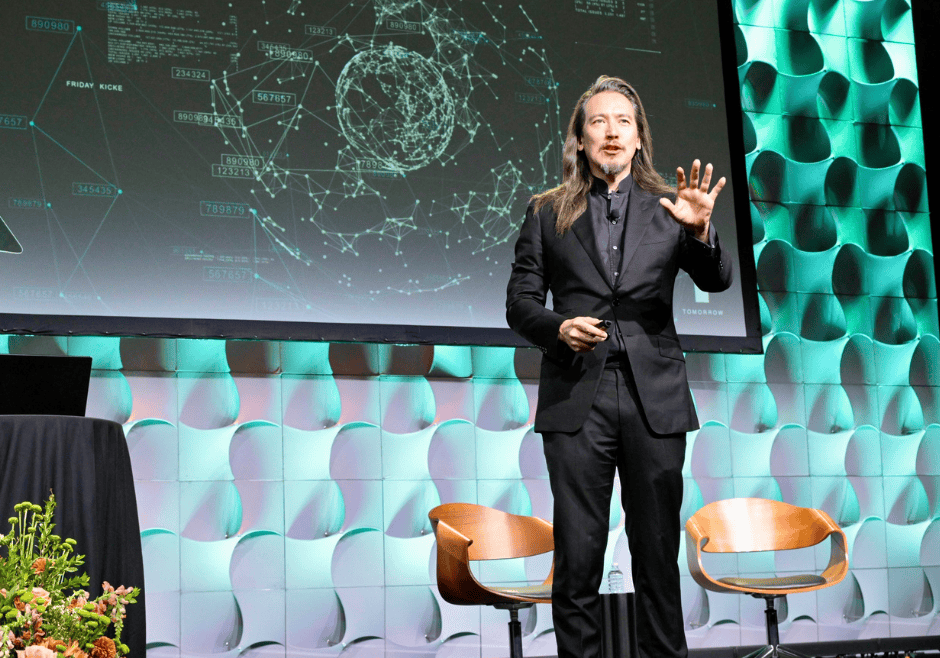“The future we end up in is the future we choose to build.”
Those opening remarks by futurist Mike Walsh set both the tone and the table for his keynote address at the 2025 Fall Conference in San Diego. Walsh began his presentation by addressing his occupational title of “futurist,” telling attendees that people often conflate “futurist” with “psychic.” Noting the tech-heavy programming at the Conference, Walsh said that as a futurist, the worst place to look for trends is at tech. Instead, the identifiable patterns come from human behavior.
Walsh recalled the early days of the tech boom, when he visited one of the first server rooms in Indonesia that—literally—held the nation’s internet. He showed a photo of a jumble of cords, each cord bearing a small, Post-it-like sticker with the name of the server powered by the cord. (“Here’s the Google cord. Here’s the Facebook cord.”) The entire room—and thereby the entire internet—was the purview of one employee, who jokingly asked Walsh, “Wanna see me take Facebook offline for Indonesia for 30 seconds?”
Those WERE the early days. Things have become much more siloed and sophisticated since then. Tech is an integral part of our everyday lives, determining how we work, how we play, how we educate our children, and how we help keep them safe. But here in the States, we still haven’t scratched the surface of what it means to be transformed by technology. To get a sense of what that looks like, said Walsh, look no further than Seoul, South Korea.
“One in 10 workers in Korea right now are robots,” he said. “And no one is complaining.” With one of the lowest fertility rates in the world, technology bridges the birthrate gap. Walsh showed a photo of a Korean shipyard, where drones offload ships before they even dock. Given the audience of engineering professionals, Walsh noted that the work performed by attendees is critical. Being replaced by robots is not a concern for engineers, he said, but technology will change the nature of the work that is performed.
And just as AI changes the nature of work, AI itself will be changed. “AI will be different in 10 years,” said Walsh, as the technology gains more understanding of what it means to be in the physical world. “We underestimate how deeply it will be baked into our daily lives.” What will also change is the availability of AI. Today, access to Copilot or ChatGPT is either free or very close to it. Eventually, the cost of AI will reflect the cost of the data centers—and of the energy that powers it. “We’ll be building nuclear reactors to enable people to draft breakup texts,” Walsh joked.





